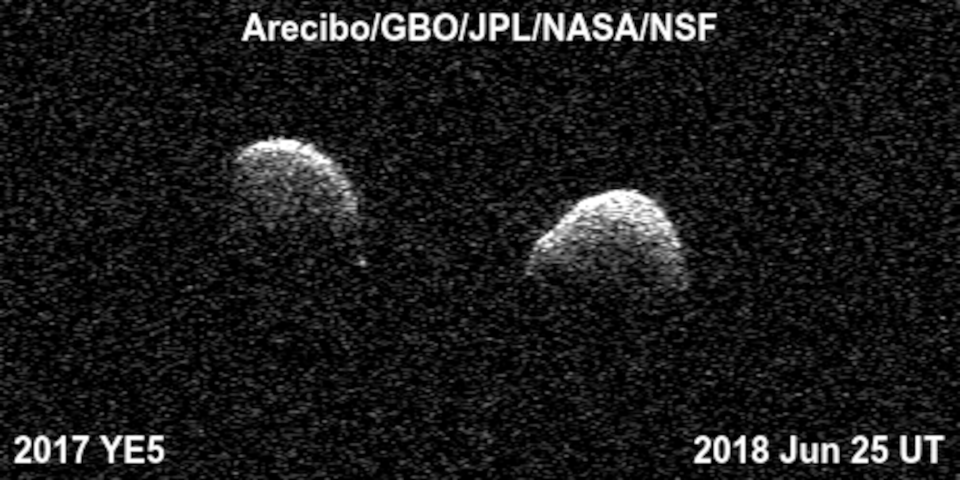Cosmic Double Take: Rare Binary Asteroid Discovered Near Earth
Surprise — it's twins!
That's the realization that struck astronomers in June after they set out to study a near-Earth asteroid called 2017 YE5, which NASA today (July 12) announced is actually two asteroids, a pair of objects orbiting each other.
The bouncing-baby asteroids were revealed by three radar telescopes, which shoot a beam of radio waves at nearby asteroids and wait for the reflection to return to Earth. Astronomers can use those received signals to paint a picture of the shape of an asteroid. In this case, that meant discovering that what looked like two lobes of one rock are actually two separate rocks, circling each other every 20 to 24 hours.
It's a particularly exciting surprise because the two pieces of 2017 YE5 are almost the same size, each about 3,000 feet (900 meters) across. So far, scientists have spotted only three other such well-matched pairs. Most binary asteroids are uneven, with one half dwarfing the other.

The new observations of 2017 YE5 showed another eye-catching result: The pair aren't identical twins. One half of the binary looks to be much darker than the other, suggesting that they're made of different things, or perhaps have extremely different textures.
But it may be a very long time before scientists can reveal any other secrets of the pair. The new observations took advantage of asteroid's closest approach to Earth, when it flew by about 3.7 million miles (6 million kilometers) away. It will be more than 170 years before the binary asteroid comes as close again.
Email Meghan Bartels at mbartels@space.com or follow her @meghanbartels. Follow us @Spacedotcom, Facebook and Google+. Original article on Space.com.

